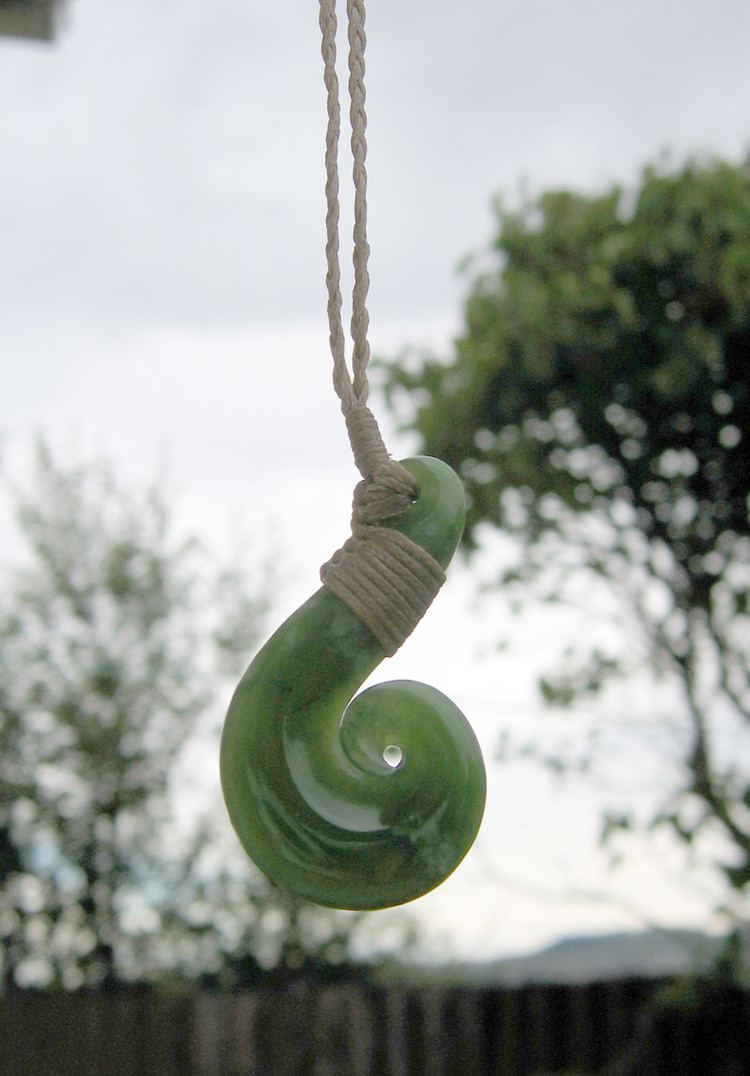 | ||
Pounamu refers to several types of hard, durable and highly valued nephrite jade, bowenite, or serpentinite stone found in southern New Zealand. Pounamu is the Māori name. These rocks are also generically known as "greenstone" in New Zealand English.
Contents
There are two systems for classifying pounamu. Geologically, the rock falls into the three categories named above, but Māori classify pounamu by appearance. The main classifications are kawakawa, kahurangi, īnanga, and tangiwai. The first three are nephrite jade, while tangiwai is a form of bowenite.
In modern usage pounamu almost always refers to nephrite jade. Pounamu is generally found in rivers in specific parts of the South Island as nondescript boulders and stones. These are difficult to identify as pounamu without cutting them open.
Significance to Māori
Pounamu plays a very important role in Māori culture. It is considered a taonga (treasure) and therefore protected under the Treaty of Waitangi. Pounamu taonga increase in mana (prestige) as they pass from one generation to another. The most prized taonga are those with known histories going back many generations. These are believed to have their own mana and were often given as gifts to seal important agreements.
Pounamu taonga include tools such as toki (adzes), whao (chisels), whao whakakōka (gouges), ripi pounamu (knives), scrapers, awls, hammer stones, and drill points. Hunting tools include matau (fishing hooks) and lures, spear points, and kākā poria (leg rings for fastening captive birds); weapons such as mere (short handled clubs); and ornaments such as pendants (hei-tiki, hei matau and pekapeka), ear pendants (kuru and kapeu), and cloak pins. Functional pounamu tools were widely worn for both practical and ornamental reasons, and continued to be worn as purely ornamental pendants (hei kakï) even after they were no longer used as tools.
Pounamu is found only in the South Island of New Zealand, known in Māori as Te Wai Pounamu ("The [land of] Greenstone Water") or Te Wahi Pounamu ("The Place of Greenstone"). In 1997 the Crown handed back the ownership of all naturally occurring pounamu to the South Island tribe Ngāi Tahu, as part of the Ngai Tahu Claims Settlement.
Modern use
Jewellery and other decorative items made from gold and pounamu were particularly fashionable in New Zealand in the Victorian and Edwardian years in the late 19th and early 20th century. It continues to be popular among New Zealanders and is often presented as gifts to visitors and to New Zealanders moving overseas. Viggo Mortensen, Aragorn in The Lord of the Rings, took to wearing a hei matau around his neck. Michael Hurst of the television programme Hercules was given a large and heavy pounamu pendant necklace which he wore on the programme. During a particularly energetic action scene the pendant bumped his teeth. The producers felt the ornament suited the nature of the programme yet considered it a safety risk, and had it replaced with a latex replica.
